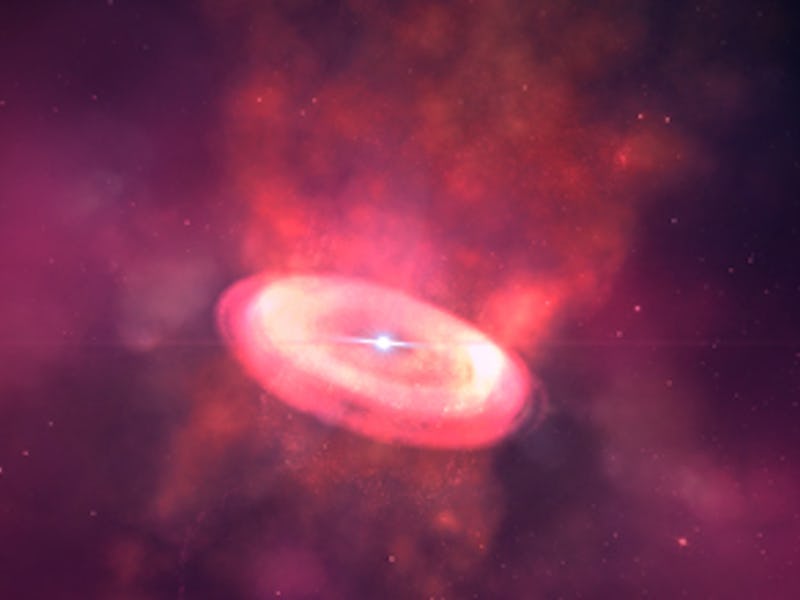A "Tornado" of Cosmic Matter is Whirling Around This Infant Star

A young star, in the throes of the formation of its solar system, will be surrounded by a swirling disc of gas and dust capable of spewing out a powerful, jet-like whirlwind, something scientists had never been able to observe — until now. Researchers observed the jets around a protostar about 450 light-years away using the Atacama Large Millimeter Array (ALMA), which seems to be on something of a tear lately, discovery-wise. The winds lift stellar materials up from the disc as it forms the new solar system, kind of like a tornado lifting objects from the ground. The findings were published Thursday in the journal Nature.
We care about these whirlwinds because learning about them changes our assumptions about the process of planet formation. We used to think they originated from inside the protoplanetary disc’s center, but being able to study them in detail for the first time has actually shown that might not be the case.
One of the protostar images from ALMA researchers are using to study the whirlwind phenomenon. Blue indicates gas moving toward us; red, gas moving away.
“During the contraction of the gas cloud, the material begins to rotate faster and faster just like a figure skater doing a pirouette spins faster by pulling their arms close to their body. In order slow down the rotation, the energy must be carried away,” said Per Bjerkeli, a postdoc in Astrophysics and Planetary Science at the Niels Bohr Institute at the University of Copenhagen and Chalmers University of Technology in Sweden, in a news release. “This happens when the new star emits wind. The wind is formed in the disc around the protostar and thus rotates together with it. When this rotating wind moves away from the protostar, it thus takes part of the rotational energy with it and the dust and gas close to the star can continue to contract.”
The Atacama Large Millimeter Array in Chile
The researchers don’t yet know what happens to the material that gets blown away — whether it eventually falls back to its origins or gets carried away into space. While the recent analysis doesn’t get into this explicitly, this is an important area of study because it potentially impacts how life is formed on other planets. If the material is indeed expelled into space for good and ends up one day seeding microbial life elsewhere, it’s important to know that that life has its origins in faraway extant space. This is why when we search for signs of life in our own solar system, we take separate approaches to, say, Mars — where any life, should it exist, could have originated on Earth or vice versa — and to distant ocean worlds like Titan, where any life we find is sure to have developed through an entirely separate process than life on Earth.